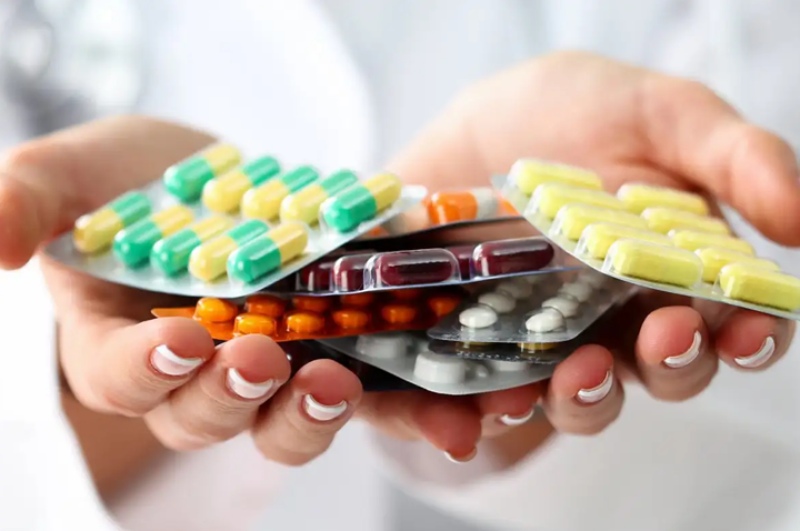Introduction
Life-saving drugs are essential in the modern healthcare landscape, offering hope and recovery to millions of patients worldwide. These medications, which can include antibiotics, antivirals, cancer treatments, and emergency medicines, have revolutionized medical practice by significantly improving patient outcomes. This content aims to explore the importance, types, development, and accessibility of life-saving drugs, emphasizing their crucial role in ensuring better health for individuals globally.
The Importance of Life-Saving Drugs
Life-saving drugs are pivotal in treating and managing severe and often life-threatening conditions. These medications can mean the difference between life and death, providing critical intervention during medical emergencies. They help manage chronic diseases, combat infections, and treat acute conditions, ultimately enhancing the quality of life and longevity.
- Combating Infections: Antibiotics and antivirals are life-saving drugs that treat bacterial and viral infections, respectively. For instance, penicillin, discovered by Alexander Fleming, has saved countless lives from bacterial infections. The manufacturer of etoposide produces this crucial chemotherapy drug, essential for treating various cancers by inhibiting the growth and spread of cancer cells.
- Treating Chronic Diseases: Medications like insulin for diabetes, antiretrovirals for HIV/AIDS, and heart medications such as beta-blockers have significantly improved the management of chronic diseases, reducing mortality rates and improving patient outcomes.
- Cancer Treatment: Chemotherapy drugs, targeted therapies, and immunotherapies have transformed cancer treatment, increasing survival rates and providing patients with new hope.
- Emergency Care: Drugs like epinephrine for severe allergic reactions, naloxone for opioid overdoses, and clot-busting drugs for heart attacks and strokes are critical in emergency medicine, saving lives in urgent situations.
Types of Life-Saving Drugs
Life-saving drugs encompass a broad range of medications designed to treat various conditions. Some of the most crucial categories include:
- Antibiotics: These drugs treat bacterial infections. Common examples include penicillin, amoxicillin, and ciprofloxacin. They have been instrumental in reducing mortality from infections that were once considered fatal.
- Antivirals: Medications such as acyclovir, oseltamivir, and antiretroviral drugs for HIV/AIDS are essential in managing viral infections, significantly improving patient survival rates.
- Chemotherapy Agents: Drugs like cyclophosphamide, methotrexate, and doxorubicin are used to treat cancer. These medications target rapidly dividing cancer cells, helping to shrink tumors and prevent metastasis.
- Cardiovascular Drugs: Beta-blockers, ACE inhibitors, and anticoagulants are vital in managing heart disease, reducing the risk of heart attacks and strokes, and improving overall cardiovascular health.
- Emergency Medications: Epinephrine, naloxone, and tissue plasminogen activators (tPA) are crucial in emergency situations, providing immediate intervention to prevent death or serious complications.
Development of Life-Saving Drugs
The development of life-saving drugs is a complex and rigorous process that involves several stages, including discovery, preclinical testing, clinical trials, and regulatory approval. This process ensures that new medications are both safe and effective for patient use.
- Discovery and Preclinical Testing: Scientists identify potential drug candidates through laboratory research. These candidates undergo preclinical testing in cell cultures and animal models to assess their safety and efficacy.
- Clinical Trials: If preclinical results are promising, the drug enters clinical trials, which are conducted in multiple phases:
- Phase I: Tests the drug’s safety and dosage in a small group of healthy volunteers.
- Phase II: Evaluates the drug’s effectiveness and side effects in a larger group of patients with the target condition.
- Phase III: Confirms the drug’s efficacy, monitors side effects, and compares it to standard treatments in a large patient population.
- Phase IV: Post-marketing studies conducted after the drug is approved to gather additional information on its long-term effects and optimal use.
- Regulatory Approval: Regulatory agencies such as the FDA (U.S. Food and Drug Administration) and EMA (European Medicines Agency) review the trial data to ensure the drug meets safety and efficacy standards before granting approval for public use.
Read more: Specialitymedz
Accessibility and Affordability
While the development of life-saving drugs is crucial, ensuring their accessibility and affordability is equally important. Several factors influence the availability of these medications, including cost, distribution, and healthcare infrastructure.
- Cost: The high cost of research, development, and regulatory approval often results in expensive life-saving drugs. Efforts to reduce costs include generic drug production, government subsidies, and pharmaceutical partnerships.
- Distribution: Effective distribution networks are essential to ensure that life-saving drugs reach patients in need, especially in low- and middle-income countries. International organizations like the World Health Organization (WHO) work to improve drug distribution in these regions.
- Healthcare Infrastructure: Adequate healthcare infrastructure is necessary to support the distribution and administration of life-saving drugs. This includes well-equipped hospitals, trained healthcare professionals, and efficient supply chains.
The Future of Life-Saving Drugs
The future of life-saving drugs looks promising, with advances in technology and science paving the way for new treatments. Innovations such as personalized medicine, gene therapy, and biotechnology hold the potential to revolutionize the development and application of life-saving drugs.
- Personalized Medicine: Tailoring treatments to individual patients based on their genetic makeup can enhance the effectiveness of life-saving drugs, minimizing side effects and improving outcomes.
- Gene Therapy: This cutting-edge approach involves modifying a patient’s genes to treat or prevent disease. It holds promise for curing genetic disorders and certain types of cancer.
- Biotechnology: Advances in biotechnology are leading to the development of new biological drugs, including monoclonal antibodies and biosimilars, which can target specific disease pathways more effectively.
Conclusion
Life-saving drugs are indispensable in modern medicine, offering critical interventions that improve health outcomes and save lives. From combating infections to managing chronic diseases and treating cancer, these medications play a vital role in healthcare. Ensuring their development, accessibility, and affordability is crucial to maximizing their impact on global health. As scientific and technological advancements continue to evolve, the future of life-saving drugs holds great promise, bringing new hope to patients worldwide.
